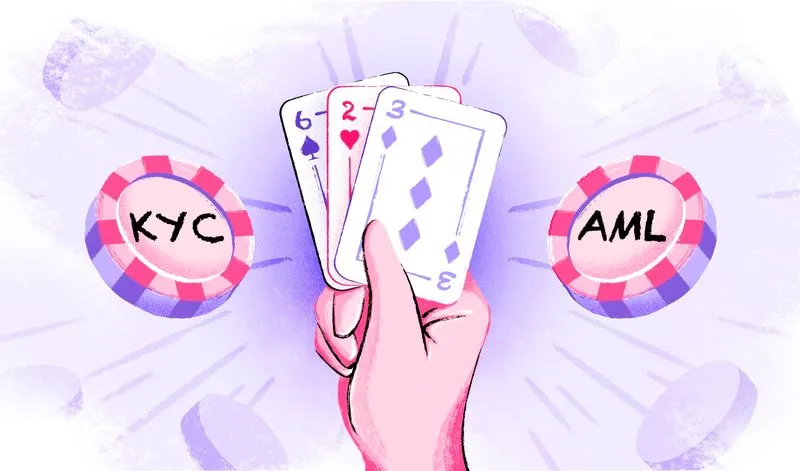Onboarding merchants is critical for any payment service provider or merchant acquirer looking to grow their business. More merchant onboarding practices mean more potential transactions. Allowing fraudulent transactions will result in costly charges that affect company profits.
The payments industry is constantly growing, so companies need to be careful when onboarding new merchants. They must ensure they can quickly and easily approve good merchants while keeping bad ones out of their system.
This blog looks at the merchant onboarding practices, best practices, KYC, and how a PSP or merchant acquirer can monitor them.
What is Merchant Onboarding?
Businesses must undergo merchant onboarding practices when they sign up with payment processors or payment service providers (PSPs). This is because it’s not as simple as asking if they want to use the financial services – there’s a higher possibility for fraud. So to help protect against fraud, these organizations must verify the business’s identity and collect additional information about them.
To ensure a smooth and legally compliant merchant onboarding practices, PSPs must collect enough information about potential new merchants to conduct a thorough risk assessment. This balance between speed and thoroughness can be tricky, and a merchant may need to undergo more stringent risk management procedures if they belong to a risky category. While even the PSPs need to do it carefully so as not to exhaust and lose the potential merchant.
Merchants who operate in industries with a high likelihood of chargebacks or fraud are typically considered “high-risk.” For instance, merchants who run online gambling platforms or gaming platforms checked more stringently as there have been multiple instances where criminals used gambling platforms to execute malicious actions for fraud and money laundering.
Merchant Onboarding Practices

Merchant onboarding practices is a 6 step procedure including the following steps:
Prescreening
The pre-screening process for new merchants is conducted during the earliest stages. Then, when a merchant applies, the acquirer quickly checks to ensure everything is in order. This isn’t an extensive procedure, but it can be useful in eliminating obvious scammers or fraudsters.
Merchant KYC Process
A key element for adding a new merchant account is ensuring the business entity is legitimate. The business must exist, be up and running, and the account sign-up must be authorized. In this step, the merchant will need to provide background verification.
Even though this process can take some time, recent advancements in automation and digitization have helped to streamline many aspects of KYC. Instead of physically submitting dozens of documents, most payment processors have API-based integrations that allow merchants to submit their applications directly through their online environment.
The KYC process is essential for two reasons: first, it provides the information required by law; second, it can help reveal any further due diligence requirements that may be necessary. Incorporating fraud checks and individual ID requirements into the merchant identity assessment makes it easier to identify anonymous, questionable accounts.
Merchant History Check
When a PSP is evaluating a company for a merchant account, they’ll closely examine the merchant’s business’s track record as well as people’s personal credit history. This is to ensure that they are a reliable borrower and that their company doesn’t have any red flags in its financial history. Sometimes, they may need to submit documentation to verify their credit history.
Business and Operational Model and Web Content Analysis
Depending on the level of risk determined during due diligence, a business and operational model analysis might be required. The requirements can differ based on the PSP or acquiring bank but are typically only done for high-risk merchants. The onboarding acquirer might also conduct a web content analysis to check the web presence and content for compliance.
Information Security Compliance
After a merchant has gone through the provisional stage, they’ll enter the operational phase. All transactions must adhere to the latest network security requirements to ensure everything goes smoothly. Once compliance has been guaranteed, one can start accepting sales and processing payments!
Credit Risk Underwriting
Credit risk underwriting for merchants includes determining if they meet the payment risk standards. This helps payment facilitators, banks and processors decide if they can trust the merchant to make payments.
Merchant Risk Management
Understanding the risks and appropriate countermeasures necessary to determine the correct onboarding friction. Specific industries are considered high-risk online brokers, foreign exchange, or gaming because they offer the potential for huge transactions. Every merchant is different, and the level of risk and amount of due diligence checks are necessary to change accordingly.
There are contrasts in the level of due diligence required for other businesses. For example, credit underwriting has certain rules, as merchants effectively offer unsecured loans. However, merchants must meet some standards across the board. For example, legal compliance factors like Know Your Customer (KYC), Anti-Money Laundering (AML), and Know Your Customer’s Customer (KYCC) apply to all businesses. Similarly, all companies must follow the standards and rules set by the card networks. This includes having specific legal contracts in place with all third parties.
Merchant Monitoring
Merchant acquirers or PSPs must maintain risk management after onboarding a new merchant. If a merchant changes the nature of their business, or if there’s a sudden change in transaction volume or amounts, that merchant needs to be re-evaluated for risk. A shift in risk criteria could mean that the merchant is already doing damage, so it’s crucial to complete this process quickly.
Merchant monitoring practices must include checks for:
- Exceeding of thresholds
- Spikes in activities
- Changes on the website like changes in products or links
- Including people on the sanction list
- Unusual cross-border activities
- Wrong media mentions
Automation in monitoring has been largely successful, but there’s a problem with false positives. It’s challenging to get the matches, so most people think it’s still better than not having automation. There are also issues when merchants start selling in new markets or offering new products, as the technology doesn’t always catch up. Consequently, the industry is becoming more challenging to compete.
Final Thoughts
The first step in every merchant onboarding practice is the merchant processing application (MPA). This document contains all the information a merchant acquirer needs to provide a processing partner to get the merchant onboarded, including details about the business, banking, ownership, and more. The information in the MPA is used in the underwriting process, ultimately deciding whether the merchant will be accepted.
Boarding teams should ditch the paper MPAs and go digital for several reasons. For one, digital MPAs are much easier to store and manage. Plus, digital MPAs take up zero space, don’t need to be printed or scanned, and can be pulled up in seconds when needed.
By creating a successful merchant onboarding process with identity verification services through automation, it can help resolve issues by enabling smoother integration between the steps and eliminating potential human error.
For more informational content, head over to our blog!
FAQs
Why is merchant onboarding important?
Merchant onboarding is important because it provides a company’s digital footprint on the web. This allows creditors and clients to access this information anytime they want, which can be very beneficial. Additionally, merchant onboarding can help improve online presence and reputation, attracting more customers.
What documents are needed to onboard a merchant on UPI?
While this list isn’t exhaustive, some of the general document types a merchant may need to have on hand include: 1. salary slips 2. All individuals in the company on the director level will need to provide proof of identity, such as a passport or driver’s license. 3. Company registration documents 4. income tax returns 5. proof of address 6. bank statements
What is merchant underwriting?
There are a few key things that banks, payment processors, and payment facilitators assess when they’re looking at a merchant’s application for an account. They want to see that the merchant can meet the risk requirements for accepting payments, and they also want to be confident that the merchant will follow the rules and receive payments properly. The merchant underwriting process helps to give all of these parties the peace of mind they need to move forward with working with a particular merchant.



